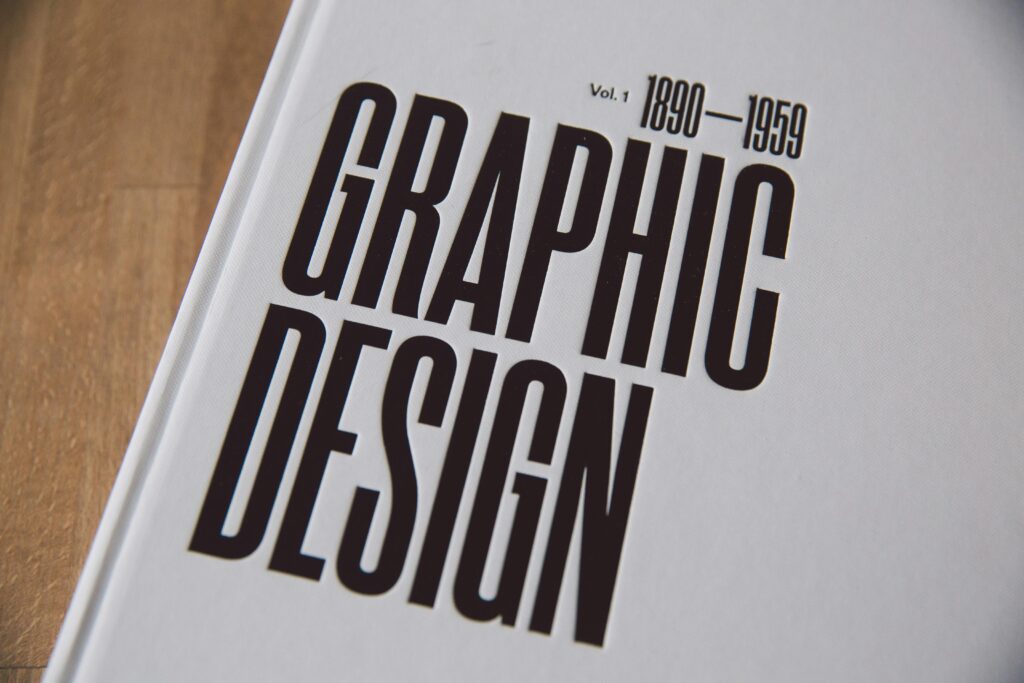Blog
Latest News
& Updates
October 29, 2024
How Professional Graphic Design Elevates Brand Identity
First impressions are powerful, especially in the world of branding, where a single glance at a logo, color scheme, or design can shape perceptions about a business. Visual identity plays a pivotal role in capturing attention and establishing trust. This article explores the impact of professional graphic design on building a cohesive brand identity, highlighting how high-quality visuals, storytelling, and design alignment with core brand values create a memorable and relatable brand presence. From color psychology to logo design, we’ll uncover how professional design elements can strengthen brand identity and elevate market presence.
What is Brand Identity?
Brand identity is the distinctive visual and emotional representation of a brand, conveying its personality, values, and purpose to the audience. It includes a variety of components, each of which plays a crucial role in forming a cohesive and recognizable image. When well-executed, brand identity helps a brand stand out in a competitive marketplace and fosters lasting connections with its audience.
Core Components of Brand Identity
- Logo: A brand’s primary symbol, the logo, captures its essence in a single, memorable image. It’s the cornerstone of visual identity, providing the foundation for other design elements and giving the audience a quick, recognizable association with the brand. Logos can range from simple icons to elaborate wordmarks, but they are always a reflection of the brand’s core values.
- Color Palette: Colors evoke specific emotions and associations, helping to reinforce a brand’s message. For example, blue is often used by brands wanting to convey trust and dependability, while green is associated with growth and sustainability. A carefully chosen color palette not only enhances the aesthetics of brand materials but also makes the brand more memorable.
- Typography: The choice of fonts communicates a brand’s tone and character. Serif fonts are often seen as professional and traditional, while sans-serif fonts give a modern and clean feel. Typography brings depth to a brand’s personality, helping the audience understand its values and approach at a glance.
- Imagery and Graphics: Photos, illustrations, and other visual elements communicate a brand’s tone and style. Whether using clean and minimalistic imagery or bold and dynamic graphics, these visuals reinforce the brand’s character and offer an additional layer of storytelling.
- Brand Voice: Extending beyond visuals, brand voice defines the language style, tone, and approach in messaging. Consistency in voice across communication channels helps a brand sound authentic and cohesive, whether in social media posts, advertisements, or customer service interactions.
Importance of Consistency
Consistency across brand elements is key to building trust and recognition. When a brand maintains a unified look and feel across all platforms—such as its website, social media, and packaging—customers can quickly recognize and trust it. This consistent presence reinforces loyalty, as customers come to know what to expect from the brand, fostering a sense of familiarity and dependability. Over time, a cohesive brand identity becomes part of the brand’s reputation, making it easier for the audience to remember and connect with it.
In summary, brand identity is the culmination of design choices that represent a brand’s values, personality, and promise. By prioritizing consistency and aligning design elements with the brand’s core message, businesses can create a powerful identity that stands out and builds lasting customer relationships.
The Role of Graphic Design in Building Brand Identity
Visual Representation of Values
Graphic design transforms a brand’s core values into visual elements that communicate its essence. A minimalist design might reflect a commitment to simplicity, while vibrant colors might show energy and creativity. Through choices in color, layout, and imagery, graphic design creates a brand identity that aligns with its mission and values, making it more relatable to its target audience.
Emotion and Connection
Design evokes emotions and creates connections that go beyond just a logo or tagline. A well-designed brand visual can inspire trust, excitement, or nostalgia, helping customers form a deeper, more personal connection. These emotional cues build loyalty and positive associations with the brand, driving lasting relationships.
Differentiation in the Market
In a competitive landscape, effective design sets a brand apart. Unique visuals, consistent color palettes, and a cohesive brand voice make a brand recognizable in a crowded market. Differentiated design enables the brand to capture attention quickly and leave a memorable impression, enhancing its visibility and appeal.
Key Elements of Graphic Design that Strengthen Brand Identity
Logo Design
A logo serves as the visual cornerstone of a brand’s identity, offering a single, memorable image that captures the brand’s values and essence. The impact of a well-designed logo goes beyond aesthetics; it sets the brand apart, increases brand recognition, and communicates a brand’s personality. Iconic logos like Apple’s or Nike’s are so deeply ingrained in consumer minds that they instantly evoke brand values and experiences. A powerful logo is simple, adaptable, and relevant, encapsulating the core of what a brand stands for in a way that resonates with its audience.
Typography
Typography plays a substantial role in how a brand is perceived. Fonts have an immediate impact on tone, setting a professional, casual, classic, or innovative vibe. For instance, serif fonts are often associated with tradition and reliability, making them popular in financial services, while sans-serif fonts give a more modern, minimalistic appeal, often favored by tech brands. Handwritten or custom fonts can introduce a personal or artisanal feel, aligning with brands focused on creativity or human connection. Typography should reflect the brand’s values while remaining legible and consistent across platforms, reinforcing the identity visually and functionally.
Color Psychology
Color is one of the most emotionally evocative aspects of design and can strongly influence brand perception. Each color carries psychological associations—blue, for instance, conveys trust and calmness, making it a popular choice for healthcare or financial companies, while red evokes excitement, urgency, or passion, making it ideal for brands focused on energy or creativity. Green, often associated with nature and growth, fits brands centered on sustainability or wellness. By choosing a color palette that aligns with the brand’s purpose and audience, brands can strengthen the connection between their values and their visual representation, creating a subconscious bond with customers.
Imagery and Graphics
The images, illustrations, and graphics used in brand materials add depth to a brand’s identity, offering emotional appeal and enhancing the brand’s message. Imagery can communicate lifestyle elements, mood, and tone, directly influencing how customers perceive and relate to the brand. For instance, a luxury brand may use polished, high-resolution images with clean compositions, while an adventure brand might use bold, dynamic images of outdoor activities to create a sense of excitement. Illustrations can add a unique touch, conveying creativity and warmth or playfulness. Well-chosen imagery not only engages the audience but reinforces brand storytelling by aligning visuals with the brand’s core narrative.
Layout and Composition
The layout and composition of design elements affect how a brand’s information is absorbed and remembered. Thoughtful composition guides the viewer’s eye naturally, making content easy to read and digest. By strategically placing text, images, and whitespace, designers create a visual flow that highlights key messages and calls to action without overwhelming the viewer. This structure contributes to readability and enhances brand impact, ensuring that essential information is easily accessible and memorable. Additionally, a balanced and well-organized layout conveys professionalism and builds trust, making the brand feel cohesive and intentional.
Cohesion Across Platforms
Each of these design elements should be implemented consistently across all brand platforms to create a unified identity. When logos, fonts, colors, imagery, and layout styles align on websites, social media, product packaging, and printed materials, they build a seamless brand experience. This cohesion is crucial for brand recognition, as audiences come to expect and recognize a consistent visual language. Through deliberate, cohesive design choices, brands not only elevate their image but create an impactful presence that resonates with customers, inviting them into a familiar, trusted experience.
Incorporating these design elements strategically strengthens brand identity, enhancing customer perception, loyalty, and trust. Thoughtful graphic design gives brands the visual tools to communicate who they are, making them memorable and distinct in a crowded market.
Case Studies: Examples of Brand Identity through Graphic Design
Successful Brand Identity Transformation
Brands such as Airbnb and Burberry have transformed their images through intentional, professional graphic design. Airbnb’s brand shifted from functional to approachable and community-oriented, with a modern, friendly logo and a refined color palette reflecting inclusivity. Burberry, on the other hand, rejuvenated its image by updating its logo to a minimalistic serif typeface, which modernized its luxury appeal while paying homage to heritage.
Before and After
Before these redesigns, Airbnb’s identity felt technical and disconnected from its mission, while Burberry’s logo seemed outdated. The new visuals aligned each brand better with its market: Airbnb’s vibrant visuals appeal to diverse travelers, while Burberry’s refined design speaks to luxury consumers seeking a blend of tradition and modern style.
Impact Metrics
Following these rebrands, both companies saw significant results. Airbnb’s redesign contributed to a surge in global recognition and engagement, aligning its image with its growth as a travel community leader. Burberry reported increased brand engagement, younger customer interest, and revitalized sales as its rebrand connected with modern luxury shoppers. These cases highlight how strategic design enhances alignment, market appeal, and revenue growth.
The Benefits of Professional Graphic Design Services for Brand Identity
Cohesive Visual Communication
Professional graphic design services bring consistency across all brand materials—from websites to print ads. This cohesive communication ensures that every piece, regardless of format, reflects the same values and style, making the brand more recognizable and trustworthy. Visual unity across channels reinforces brand identity, improving overall brand recall.
Credibility and Trust
Quality design builds credibility. When customers encounter polished, thoughtfully crafted visuals, they’re more likely to trust the brand. Conversely, inconsistent or amateurish design can deter trust and question a brand’s legitimacy. High-quality design signals professionalism, setting the foundation for strong customer relationships.
Adaptability and Scalability
Professional design supports brand growth by creating assets that are easily adaptable across new markets, digital platforms, and campaigns. Scalable design systems allow for smooth expansion into new regions or platforms, ensuring that as the brand grows, its visual identity remains strong and recognizable. This adaptability supports both immediate goals and long-term branding success.
Tips for Choosing the Right Graphic Design Service
Evaluate Their Portfolio
Reviewing a designer’s portfolio offers insight into their style, range, and the quality of their previous work. A strong portfolio demonstrates their ability to handle various design requirements and helps you gauge if their aesthetic aligns with your brand.
Understand Their Design Process
Clear communication and a structured design process are essential for a successful partnership. A designer with a well-outlined process that includes feedback loops ensures that the final outcome aligns with your expectations and strategy.
Align with Brand Values
Choose a designer who understands your brand’s mission and values. A designer attuned to your vision can translate your core principles into visuals that resonate with your audience, strengthening your brand identity.
How to Implement and Maintain Strong Brand Identity through Design
Brand Guidelines
Creating brand guidelines is crucial for consistent visual identity. These guidelines should cover logo usage, color palettes, typography, and imagery style. Sharing these guidelines with your team and partners ensures all materials follow the same standards.
Regular Updates and Refreshes
Design elements may need periodic updates to keep your brand relevant and appealing. Refreshing logos, colors, or layouts in line with industry trends keeps the brand contemporary without losing core identity.
Consistency Across Platforms
To maintain cohesion, ensure that your visuals are consistent across social media, websites, and print. Regularly reviewing brand materials helps catch inconsistencies, reinforcing recognition and trust across all customer touchpoints.
Conclusion
Professional graphic design plays a transformative role in building and reinforcing brand identity. It creates cohesive visuals, builds credibility, and enables a brand to connect emotionally with its audience. Investing in quality design is a powerful way to elevate your brand’s presence and consistency across all platforms, ensuring a memorable and trusted image. For those ready to make their brand stand out, reaching out to professional services like Blue Edge Business can provide the expert support needed to achieve a lasting, impactful brand identity.



